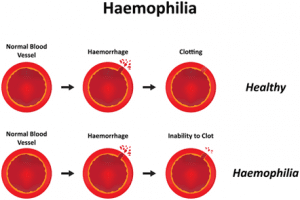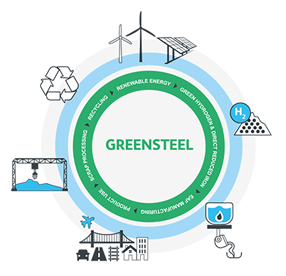HEALTH ISSUES
1. WHAT IS BLASTOMYCOSIS?
TAGS: GS-II-HEALTH ISSUES- PRELIMS
THE CONTEXT: Recently, a person has died of a fungal infection after an outbreak at a Michigan paper mill in United states that is likely to have infected nearly 100 people in the country.
THE EXPLANATION:
- Blastomycosis is an infection caused by a fungus called Blastomyces.
- The fungus lives in the environment, particularly in moist soil and in decomposing matter such as wood and leaves.
- In the United States, the fungus mainly lives in the midwestern, south-central, and southeastern states, particularly in areas surrounding the Ohio and Mississippi River valleys, the Great Lakes, and the Saint Lawrence River. People can get blastomycosis after breathing in the microscopic fungal spores from the air.
Symptoms:
Approximately half of people who are infected with the fungus Blastomyces will show symptoms. The symptoms of blastomycosis are often similar to the symptoms of other lung infections, and can include:
- Fever
- Cough
- Night sweats
- Muscle aches or joint pain
- Fatigue
2. WHAT IS HEMOPHILIA?
TAGS: GS-II-HEALTH ISSUES- PRELIMS
THE CONTEXT: Every year, World Hemophilia Day is observed on April 17 to raise awareness about the rare blood disorder and help those suffering from it lead a better life.
THE EXPLANATION:
- The day was first commemorated by the World Federation of Hemophilia (WFH) in 1989 in remembrance of Frank Schnabel, who was born on April 17, 1942, and spent his entire life working to make the lives of those who were affected by this ailment better.
- The theme for this year is “Access for All: Prevention of Bleeds as the Global Standard of Care,” and the goal is to persuade policymakers and governments to enhance access to care with a particular emphasis on better bleeding control.
What is hemophilia?
- Hemophilia is a genetic disorder that affects the body’s ability to form blood clots. People with hemophilia have deficiencies or abnormalities in certain clotting factors, which are proteins that help the blood clot.
- As a result, they may experience prolonged bleeding or spontaneous bleeding into muscles, joints, or organs.
- The signs and symptoms of hemophilia vary depending on the severity of the condition. Some common signs and symptoms include prolonged bleeding after injury, surgery or dental procedures, frequent nosebleeds, bruising easily, joint pain and swelling, especially in the knees, elbows, and ankles, blood in urine or stool, headaches, blurred vision, or other neurological symptoms, if bleeding occurs in the brain.

ENVIRONMENT AND ECOLOGY
3. EXPLAINED: WHAT IS GREEN STEEL AND HOW IT CAN REDUCE CARBON EMISSIONS IN THE STEEL INDUSTRIES?
TAGS: GS-III-ENVIRONMENT AND ECOLOGY
THE CONTEXT:The Union Minister of Steel and Civil Aviation Jyotiraditya Scindia recently approved 13 Task Forces for defining the roadmap for ‘Green Steel’. The task forces with the involvement of experts and the industry stakeholders have been identified to deliberate on various aspects of ‘Green Steel’ production, and chalk out action points.
What is Green Steel ?
- Green Steel refers to the production of steel without relying on fossil fuels. Instead, alternative low-carbon energy sources such as hydrogen, coal gasification, or electricity are used in place of traditional coal-fired plants, which results in reduced greenhouse gas emissions, lower costs, and improved steel quality.
Why is Green steel the need of the hour?
- Currently, the steel industry is the largest industrial sector in terms of intensive energy and resource use.
- It is among the three biggest emitters of carbon dioxide (CO2), and with the aggressive expansion plans across companies globally, the emissions levels are only expected to rise if the traditional methods were to continue.
- According to data, the iron ore and steel industry globally accounts for around 8 percent of total CO2 emissions on annual basis, whereas in India, it contributes 12 percent to the total CO2 emissions.
- With such high emissions, steel producers in India and globally are facing escalating pressure from governments and investors to reduce their carbon footprint from both environmental and economic perspectives.
- Path to Net Zero:In view of commitments made at the Conference of the Parties (COP) climate change conference, the Indian steel industry needs to reduce its emissions substantially by 2030 and hit net-zero carbon emissions by 2070.
What are the Government steps to promote decarbonisation in steel industry
- The government has taken various steps to promote decarbonisation in the steel industry. The Steel Scrap Recycling Policy, 2019 increases the availability of domestically generated scrap to reduce the use of coal in steel production.
- The National Green Hydrogen Mission, launched by the Ministry of New and Renewable Energy (MNRE), focuses on green hydrogen production and usage, with the steel sector being a stakeholder.
- The Motor Vehicles (Registration and Functions of Vehicles Scrapping Facility) Rules from September 2021 aim to increase scrap availability in the steel sector.
- The National Solar Mission, launched in January 2010 by the MNRE, promotes the use of solar energy and reduces emissions in the steel industry.
- The Perform, Achieve and Trade (PAT) scheme incentivize the steel industry to reduce energy consumption. The steel sector has also adopted the Best Available Technologies globally in modernization and expansion projects.
VALUE ADDITION:
Steel production in India
- India is currently one of the leading producers of crude steel in the world, standing as the second largest producer with a production of 120 Million Tonnes (MT) during the financial year of 2021-2022.
- The majority of the country’s iron ore reserves, more than 80%, are located in the states of Odisha, Jharkhand, West Bengal, Chhattisgarh and the northern regions of Andhra Pradesh.
- These areas are important steel-producing centres and are home to some of the largest steel factories in the country, including Bhilai (Chhattisgarh), Durgapur (West Bengal), Burnpur (West Bengal), Jamshedpur (Jharkhand), Rourkela (Odisha), and Bokaro (Jharkhand).
4. MANGROVE PITTA BIRD CENSUS
TAGS: GS-III-ENVIRONMENT AND ECOLOGY
THE CONTEXT: Odisha forest officials recently have sighted 179 mangrove pitta birds in the first ever census conducted of these exotic and colourful birds in the country.
THE EXPLANATION:
- The census was carried out for the first time in the country to study the population analysis of these birds.
- The habitats of these beautiful birds are confined to mangrove forest areas in Odisha’s Bhitarkanika and Sundarban in West Bengal.
- The mangrove pitta (Pitta megarhyncha) is a species of passerine bird in the family Pittidae native to the eastern Indian Subcontinent and western Southeast Asia. It is part of a superspecies where it is placed with the Indian pitta, the fairy pitta and the blue-winged pitta but has no recognized subspecies.
- A colourful bird, it has a black head with brown crown, white throat, greenish upper parts, buff underparts and reddish vent area. Its range extends from India to Malaysia and Indonesia. It is found in mangrove and nipa palm forests where it feeds on crustaceans, mollusks and insects.
- IUCN Status: Near Threatened.
GOVERNMENT SCHEMES AND INTERVENTIONS
5. PM MITRA MEGA TEXTILES PARK
TAGS: GS-II- GOVERNMENT SCHEMES AND INTERVENTIONS
THE CONTEXT:The Prime Minister recently lauded the setting up of PM Mitra Mega Textiles Park across Lucknow and Hardoi districts in Uttar Pradesh.
THE EXPLANATION:
- Ministry of Textiles (MoT) has launched PM Mega Integrated Textile Regions and Apparel Parks (MITRAs) Scheme to strengthen the Indian textile industry by way of enabling scale of operations, reduce logistics cost by housing entire value chain at one location, attract investment, generate employment and augment export potential.
- The scheme will develop integrated large scale and modern industrial infrastructure facility for total value-chain of the textile industry for example, spinning, weaving, processing, garmenting, textile manufacturing, processing & printing machinery industry.
- These parks are envisaged to be located at sites which have inherent strengths for textile industry to flourish and have necessary linkages to succeed. The scheme envisages to leverage Public Private Partnership model for fast paced implementation in a time-bound manner.
Significance
- It will reduce logistics costs and strengthen the value chain of the textile sector to make it globally competitive.
- It will lead to increased investments (FDI and local) and enhanced employment opportunities.
- It will give domestic manufacturers a level-playing field in the international textiles market & pave the way for India to become a global champion of textiles exports across all segments.

